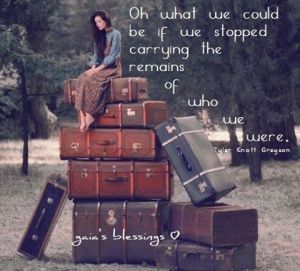Recently my nephew phoned asking for the family recipe for sweet and sour beans, a traditional side dish at Thanksgiving and Christmas. He wanted to make it for the Friendsgiving he and his friends were having. I love the idea of him and his friends, who are all in their mid to late 20s, starting some of their own traditions. And, I really love that he is incorporating something from a family tradition into this new venture.
Traditions, those rituals, beliefs, or objects that are passed down from one generation to another, bring people together, creating a sense of belonging and closeness. To this day I have very fond memories of Christmas Eve spent at my paternal grandparents’ home. Everyone was there – all the aunts, uncles, and cousins. It was a magical day with the singing of carols, the sharing of stories, the exchanging of gifts, the making of and eating of special Italian pastries, and the dining on a traditional Feast of the Seven Fishes dinner.
We seem to invest an emotional part of ourselves in our traditions which adds a priceless value to them. They evoke positive memories that we hold close to our heart. Traditions aren’t just about what we do at holidays but rather are those special things we do that hold meaning with those who are important and dear to us. They connect us to something – a time, a person, a place, an event – that often wraps us with warmth and love.
In a world filled with uncertainty, now more than ever, traditions are important because they:
- Make us feel safe and secure.
- Ground us and provide a constant.
- Give us a sense of belonging.
- Nurture connection.
- Create unity and gather us together.
- Connect us with past generations, reminding us of our roots and those things that have shaped our lives.
- Bring a measure of comfort to us.
- Provide familiarity.
- Help us gain a sense of being, belonging, believing, and benevolence.
- Teach us values.
- Create memories.
- Connect us to what we most love.
- Are typically fun and enjoyable.
- Allow us time for meaningful reflection.
Clinical psychologist Donna Rockwell writes, “Our traditions act as a compass for all of our human relationships and personal interactions, the qualitative experiences of our family life, and ultimately, the development of civilized societies themselves. As we honor traditions, so we learn to honor ourselves, and in the final analysis, each other.”
She further states, “We desperately need our traditions. Part of the responsibility of having the chance to live at all — should we choose to look at it that way — is to be a part of the transmission of our particular family and ethnic customs. In so doing, we honor past generations by passing on their rites and rituals to the next generation. In this way, our family lineages stay stable and strong. Since ceremonies outlive us, they make us feel part of that larger sense of things as we pass them down to our own children, and theirs. That is how we realize our immortality — not in living forever, but in being part of living traditions.”
Traditions are any activity we repeat to mark an occasion such as having the same foods at a holiday meal, holding a family reunion, sharing stories of memorable moments, or taking a vacation at the same place each year. American-British author Henry James said, “A tradition is kept alive only by something being added to it.” Adding to a tradition aligns with Rockwell’s term “living traditions.” Our traditional rituals do not have to keep us steeped in the past. They do, however, keep us connected to something meaningful from the past while at the same time help us create something new in the present. While we may repeat some things, we often do add something to the event or activity that reflects who we are now and that fits with the present. In doing so, we create living traditions (just as my nephew is doing with his Friendsgiving) and have something dynamic (that lives and grows with us) rather than static (unchanging and merely representative).
Business consultant Rita Barreto Craig says, “Traditions touch us, they connect us, and they expand us.” As we enter into a time of year where traditional events, activities, gatherings, food, and songs surround us, may we all be touched with warm and happy memories, connected with dear family and friends, and expanded by the messages, lessons, and thoughts that arise from the participation in or reflection of the tradition.


























